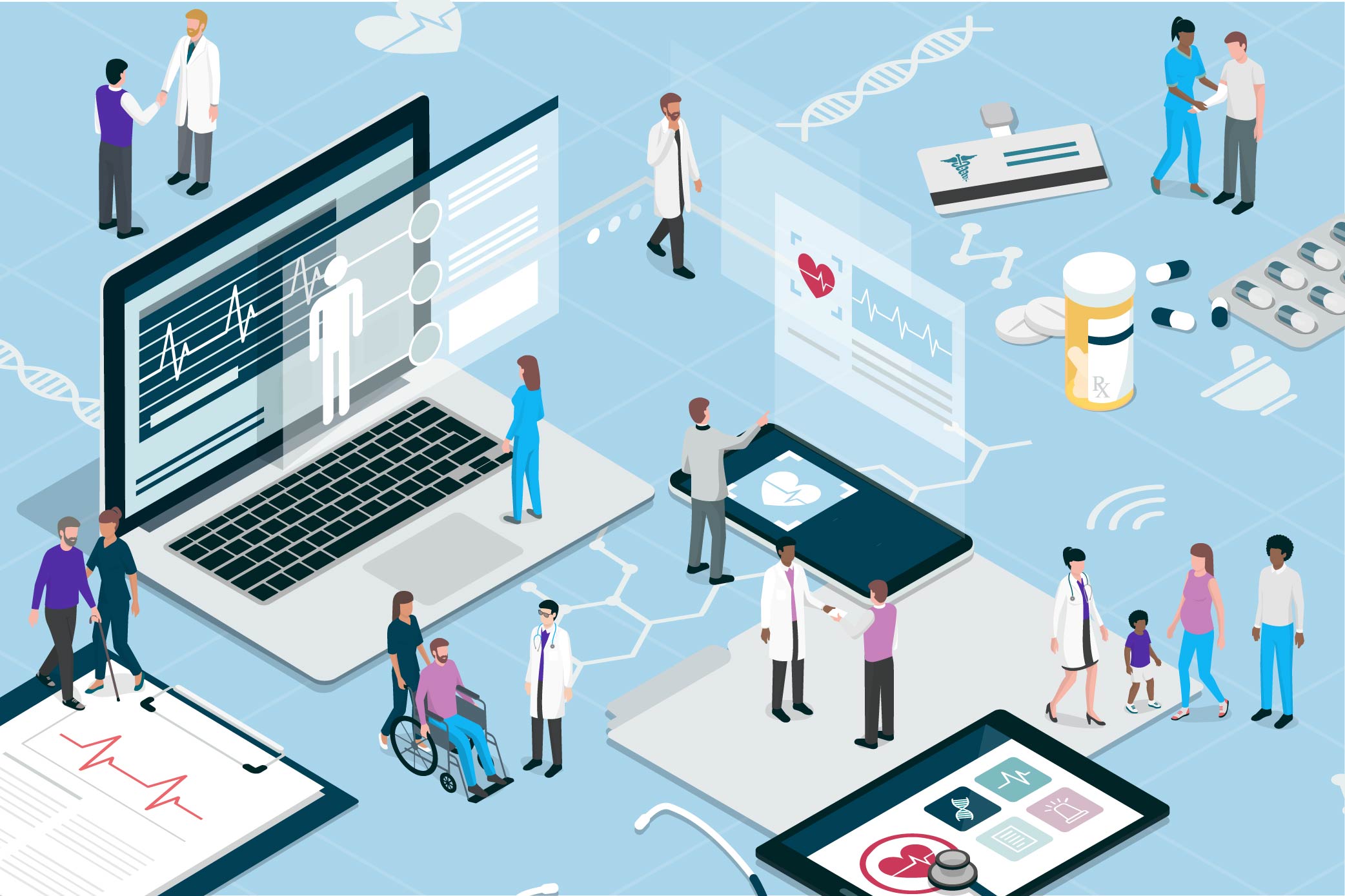
The healthcare industry experienced a massive disruption in 2020. Healthcare providers rapidly modernised their businesses to accommodate newly-established best practices for patient interaction, social distancing, and disease control.
As a result, the healthcare industry is particularly enthusiastic about adopting disruptive technology solutions such as IoT (Internet of things) and 5G to achieve improved patient outcomes and reduce business costs.
IoT technology, in a healthcare context, refers to a vast network of devices with embedded chips connected to the internet ranging from wearables and other health monitors to surgical equipment and mobile devices with patient info used by doctors and nurses on their rounds. When connected to the internet via 5G, these IoT devices can collect and transmit data with less than a one millisecond delay.
The benefits these types of solutions offer healthcare organisations are many and include:
IoT devices can monitor the equipment and hospital environment to identify areas that need maintenance and send out alerts so healthcare workers can address issues more quickly.
IoT devices can monitor congested environments to ensure best practices are being met (for example, maximum persons in rooms not being exceeded), and track patients to ensure they are getting timely service for their needs. IoT sensors can also better control lighting and heating conditions in rooms, resulting in better comfort levels for patients.
For patients at home, wearable devices can monitor health conditions to ensure recovery is proceeding as expected, which means patients can go home sooner. Wearables also help reduce interactions between staff and patients.
IoT sensors can automatically place orders for equipment or medicines once stock drops below a certain threshold, eliminating the risk of running out and freeing staff from the time-consuming need to inspect inventory levels.
Robots and other automated devices can help surgeons with the most precise operations and monitor the patient's condition throughout the procedure.
IoT devices collect data in real-time and send it to the cloud. This makes it easier for staff to share data instantly. For example, nurses complete the handover from day to night shift speedily because the data is ready ahead of time. This process minimises the risk of misinformation and eliminates the possibility of human error in data entry.
Healthcare environments need to operate in real-time (if not ahead of time via predictive technology) to ensure the patients' health and safety and the environment. Previous generations of wireless broadband would involve latency of 20 - 30 milliseconds or more, which would limit the operation of any IT application to those that aren't in real-time. 5G reduces latency to under ten milliseconds, and often as low as one millisecond, allowing for flawless real-time interaction and monitoring.
Healthcare environments are becoming more video-reliant. Since the onset of COVID-19, Australia's telehealth sessions have grown from around 20,000 telehealth consultations each month in 2019 to more than six million consultations in April and May of 2020 alone. Video requires large amounts of bandwidth to be effective, and 5G provides 2.7 times the bandwidth of its predecessor 4G.
As large operations with a lot of technology within them, healthcare facilities need many connection points to leverage IoT fully. The previous generation of mobile technology 4G could only connect about 100,000 devices per square kilometre; 5G enables more than a million connections per square kilometre. This increase gives the healthcare facility the capacity to scale their network of connected devices as high as they need to.
Healthcare providers need to be aware of the risks associated with technology use - the need for redundancy and the security of the data. The proliferation of IoT devices and their connection to the cloud and the internet means the healthcare organisation must redesign the IT security environment to account for this. While 5G brings a higher level of stability to the internet connection points, healthcare also needs built-in redundancy to ensure seamless 24/7 operation and availability - particularly when it comes to managing the workload across a team of healthcare professionals.
Healthcare providers cannot avoid IoT, as it delivers superior standards of care and better patient outcomes while also improving healthcare facilities' efficiency and profitability. 2020 has been a disrupted year for healthcare, and 2021 will likely continue the trend as 5G becomes a mainstream technology and delivers on the promise of enabling real innovation through the application of IoT. Businesses in the healthcare industry can start making long term IoT plans by starting with a trusted 5G partner. Choose a plan that works for your business and enjoy the comfort of 24/7 customer support. Speak to a SpinTel team member today.